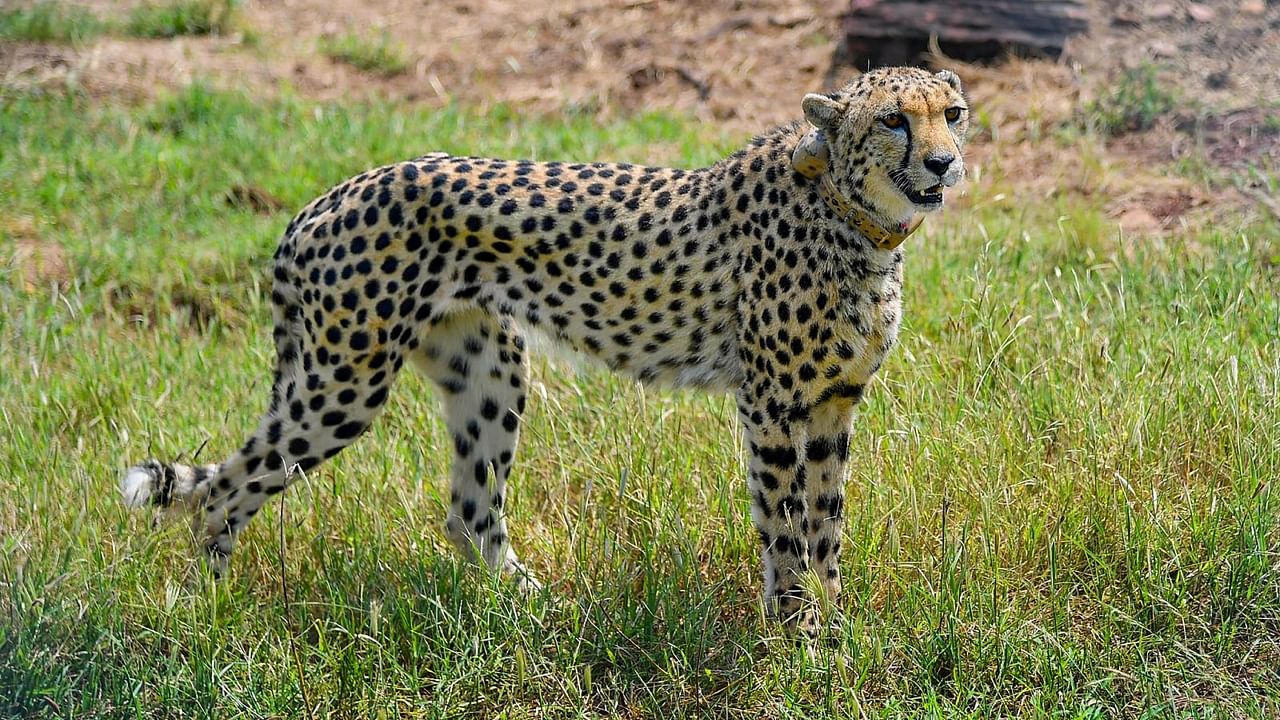
The deaths of two cheetahs at the Kuno National Park in Madhya Pradesh within 72 hours was triggered by skin infections under wet radio collars due to monsoon rain, leading to maggot infestations and septicaemia, according to South African and Namibian experts, but the National Tiger Conservation Authority (NTCA) remains silent on the back-to-back deaths.
Experts familiar with the post-mortem of the two animals said the cause of death was a disease known as 'myiasis', triggered by dermatitis or skin inflammation under the radio collars as that patch remained wet constantly due to monsoon rain.
The skin irritation attracted flies that lay eggs and produced maggots, which fed on dead or infectious tissues. With flies and larvae invading the wound, it spread to the back causing systemic infections leading to septicaemia or blood infection that turned fatal.
“This is a problem that we didn’t foresee in Africa. It is typical for the wet weather in India caused by the monsoon. Also, the cheetah can’t lick those areas for cleaning,” Adrian Tordiffe, a veterinary wildlife specialist at the University of Pretoria, and one of the advisers to the Indian cheetah project, told DH.
Once the skin is compromised, bacteria invades the body causing septicaemia and shock, which kills the animal. “It would not have happened if the animal was without the collar and the skin was dry and healthy,” he said.
An Indian wildlife veterinarian from the Wildlife Institute of India, Dehradun, is at Kuno checking the surviving animals for such wounds. He will be joined by a South African veterinarian next week.
“The plan is to first assess as many cheetahs as possible to evaluate the extent of the problem. We will then decide on the way forward once we have more information,” said a scientist associated with the programme.
The Union Environment Ministry and the NTCA brought 20 cheetahs from South Africa and Namibia as part of an ambitious programme to repopulate the Indian landscape with the feline nearly seven decades after they became extinct from the country. Out of 20, five died so far and four are still in the holding enclosures.
“The extreme wet conditions are causing the collars to create infections, and both cheetahs died of septicaemia,” said Vincent Van Der Merwe, manager, Cheetah Metapopulation Project, and the second South African expert advising India on the cheetah project.
Laurie Marker, the founder and executive director of the Cheetah Conservation Fund in Namibia, said the animals died due to septicaemia, a serious infection that occurs when bacteria enter the bloodstream.
She said the infection was triggered by a maggot infestation under the radio collars, which were fitted with satellite transmitters weighing about 400 gm, according to a BNN report. Marker said the radio collars were too tight and too heavy for the cheetahs, and that they caused abrasions and wounds on their skin.
